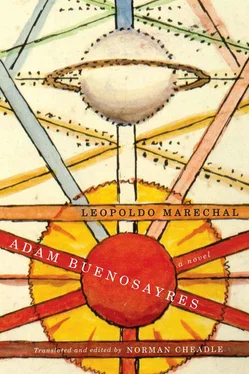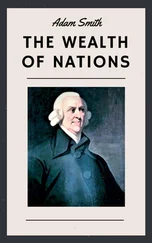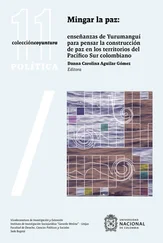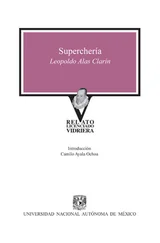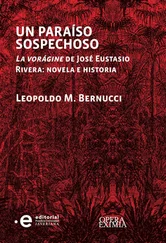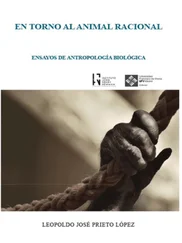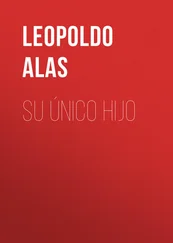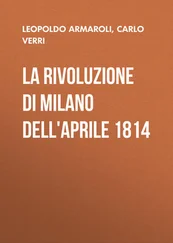Sketch by Marechal for the magazine Valoraciones (August 1926). His poem “Jazz Band” appeared in Martín Fierro 27–28 (10 May 1926). (Courtesy of María de los Ángeles Marechal)
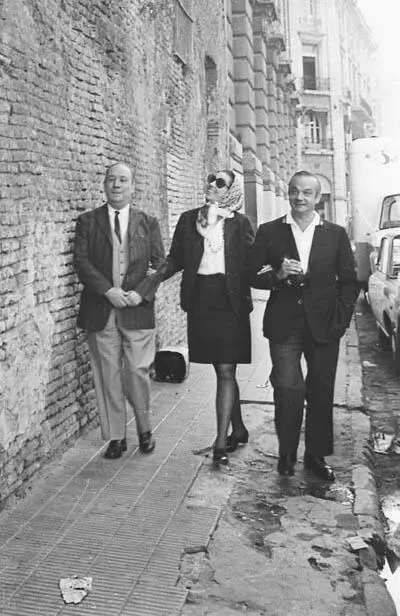
Leopoldo Marechal, Susana Rinaldi (tango singer and actress), and composer Astor Piazzolla. Photo first published in the magazine Extra in 1968. (Courtesy of photographer Gianni Mestichelli)
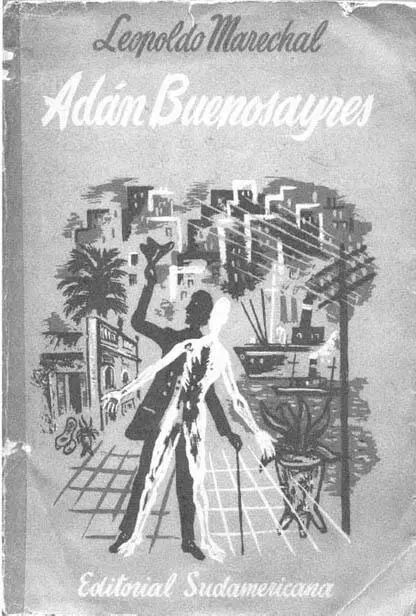
The original cover of Adán Buenosayres , published by Sudamericana in 1948.
To my comrades of Martín Fierro,1 alive and dead, each of whom could well have been a hero in this fair and enthusiastic story.
On a certain October morning in 192—, at not quite noon, six of us entered the Western Cemetery, 2bearing a coffin of modest design (four fragile little planks), so light that it seemed to carry within not the spent flesh of a dead man but rather the subtle stuff of a concluded poem. 3The astrologer Schultz and I held the two handles at the coffin’s head, Franky Amundsen and Del Solar had taken those at the foot. Luis Pereda went ahead, stocky and unsteady as a blind boar. Bringing up the rear came Samuel Tesler, pawing with ostentatious devotion a great rosary of black beads. Springtime laughed above the tombstones, sang in the throats of birds, waxed ardent in the sprouting vegetation, proclaimed amid crosses and epitaphs its jubilant incredulity toward death. And there were no tears in our eyes, nor sorrow in our hearts, for in that simple coffin (four fragile little planks) we seemed to bear not the heavy flesh of a dead man but the light material of a poem concluded. We arrived at the newly dug grave; the coffin was lowered to the bottom. From the hands of friends, the first lumps of earth drummed upon the bier, then the gravediggers’ brutal shovels took over. Samuel Tesler, proud and impudent, knelt down on the abundant earth to pray a moment, while at the head of the grave the men proceeded to erect a metal cross bearing, on its black tinplate heart, the inscription:
ADAM BUENOSAYRES
R.I.P.
Then we all made our way back to the City of the Tobiano Mare. 4
In the days that followed, I read two manuscripts that Adam Buenosayres had entrusted to me at his death: The Blue-Bound Notebook and Journey to the Dark City of Cacodelphia. Both works struck me as so extraordinary that I resolved to have them published, confident that they would find a place of honour in Argentine literature. But I later realized those strange pages would not be fully understood by the public without some account of who their author and protagonist was, so I took it upon myself to sketch out a likeness of Adam Buenosayres. At first I had in mind a simple portrait, but then it occurred to me to show my friend in the flow of his life. The more I recalled his extraordinary character, the epic figures cut by his companions, and above all the memorable exploits I had witnessed back in those days, the more the novelistic possibilities expanded before my mind’s eye. I decided on a plan of five books, in which I would present my Adam Buenosayres from the moment of his metaphysical awakening at number 303 Monte Egmont Street until midnight of the following day, when angels and demons fought over his soul in Villa Crespo, in front of the Church of San Bernardo, before the still figure of Christ with the Broken Hand. 5Then I would transcribe The Blue-Bound Notebook and Journey to the Dark City of Cacodelphia as the sixth and seventh books of my tale .
The first pages were written in Paris in the winter of 1930. A deep spiritual crisis later made me drop everything, including literary activity. Fortunately, and just in time, I understood that I was not called to the difficult path of the Perfect Ones. 6And so, to humble the proud ambitions I once held, I turned again to the old pages of my Adam Buenosayres, albeit listlessly, penitentially. But since penance sometimes bears unexpected fruit, my faint interest gathered a new momentum that carried me through to the end, despite the setbacks and misfortunes that impeded its progress .
I publish it now, still torn between my hopes and fears. Before this prologue ends, I must warn my reader that the novelistic devices of the work, strange as they may seem, are all employed to the end of rendering Adam Buenosayres with rigorous accuracy, and not out of vain desire for literary originality. Moreover, the reader will readily ascertain that, in both the poetic and comic registers, I have remained faithful to the tone of Adam Buenosayres’s Notebook as well as his Journey. One final observation: some of my readers may identify certain characters or even recognize themselves. If so, I will not hypocritically claim that this is due to mere coincidence but will accept the consequences: well do I know that, no matter where they are placed in Schultz’s Inferno and no matter what their antics in my five books, the characters in this tale all rise to “heroic stature”; and if some of them appear ridiculous, they do so with grace and without dishonour, by virtue of that “angelic wit” (as Adam Buenosayres called it) that can make satire, too, a form of charity, if performed with the smile that the angels don, perhaps, in the face of human folly .
L.M .
Chapter 1. The little white kerchief
I offered you,
embroidered with my hair. 1
Temperate and blithe are the autumn days in the witty and graceful city of Buenos Aires, and splendid was the morning on that twenty-eighth of April. Ten o’clock had just struck. Wide awake and gesticulating beneath the morning sun, the Great Capital of the South was a gaggle of men and women who fought shrieking for control over the day and the earth. Rustic reader, were you graced with birdlike powers and had you from your soaring flight cast your sparrow’s gaze o’er the burgh, I know that your loyal porteño breast would have swollen, obedient to the mechanics of pride, before the vision laid out below. Booming black ships, moored in the harbour of Santa María de los Buenos Aires, 2were tossing up onto her piers the industrial harvest of two hemispheres, the colours and sounds of four races, the iodine and salt of seven seas. Other tall and solemn vessels, their holds chock-a-block with the plant, animal, and mineral wealth of our hinterland, were setting sail in the eight watery directions amid the keening farewells of naval sirens. If from there you’d followed the Riachuelo 3upstream to the refrigeration plants, you’d have seen the young bulls and fat heifers jostling out of crammed holding-pens and bellowing in the sun as they waited for the blow between the horns, the deft knife of the slaughterman that would offer a sacrificial hecatomb to the world’s voracity. Orchestral trains entered the city, or departed for the woods of the north, the vineyards of the west, the Virgilian central plains, and the bucolic pastures of the south. From industrial Avellaneda to Belgrano, 4the metropolis was girded with a belt of belching smokestacks that scrawled wrathful sentences by Rivadavia or Sarmiento 5across the manly sky. Murmurs of weights and measures, the clink of cash registers, voices and gestures clashing like weapons, heels in flight: all these seemed the very pulse of the throbbing city. Here the bankers of Reconquista Street drove the mad wheel of Fortune; there the engineers as grave as Geometry contemplated new bridges and roads for the world. Buenos Aires in motion was laughing; Industry and Commerce were leading her by the hand.
Читать дальше
